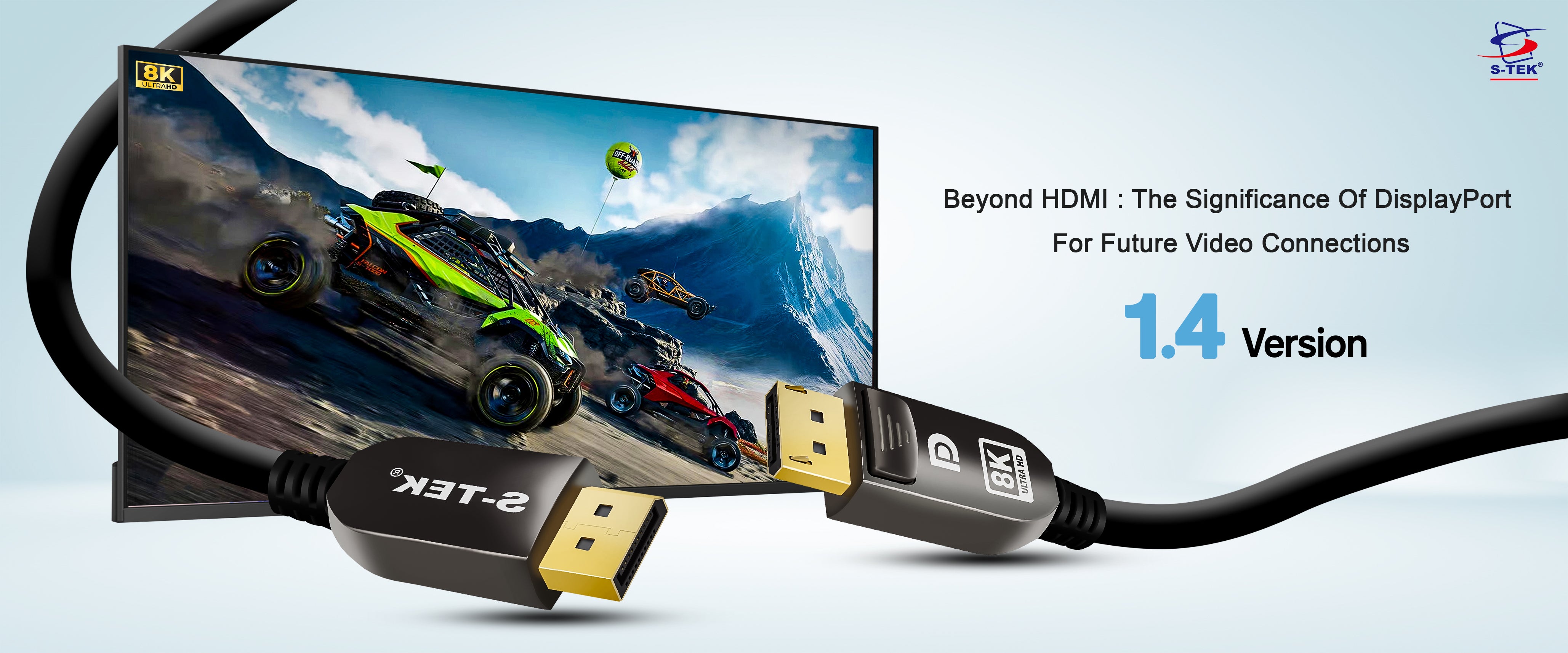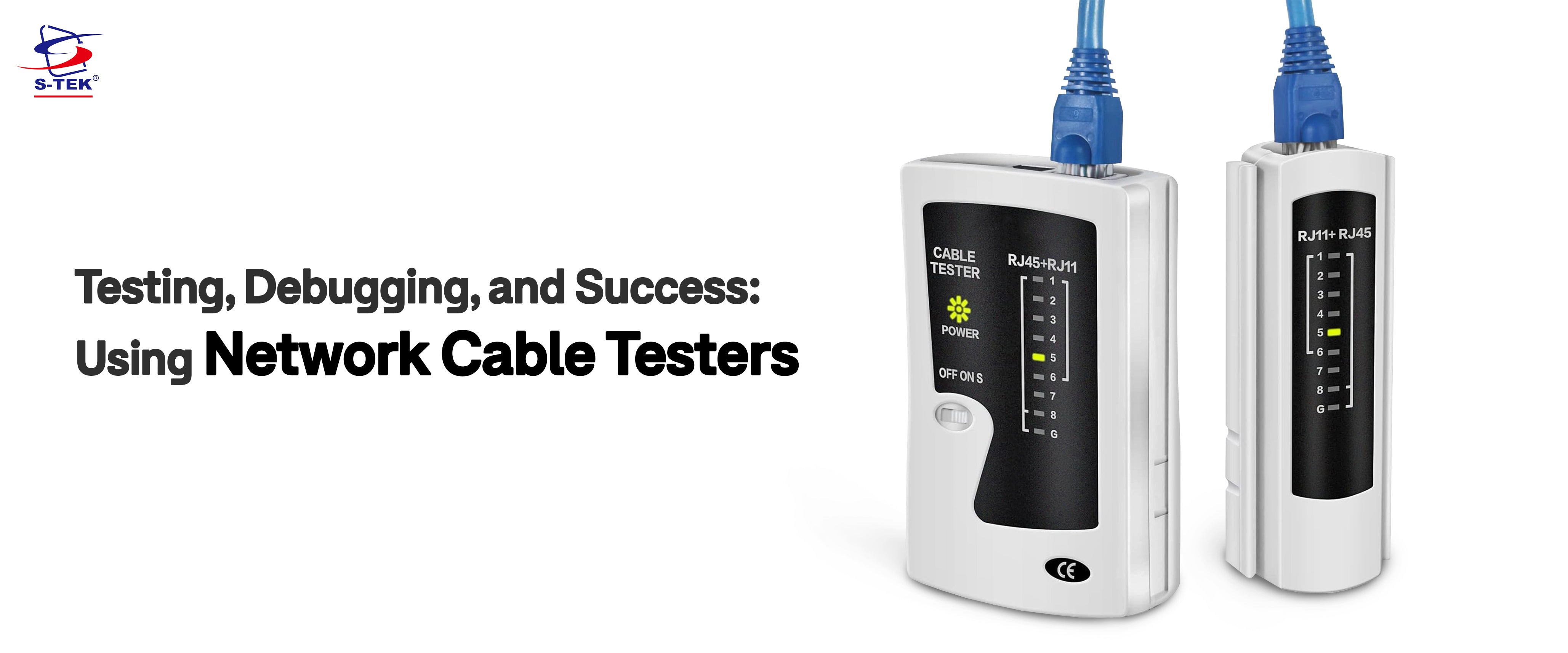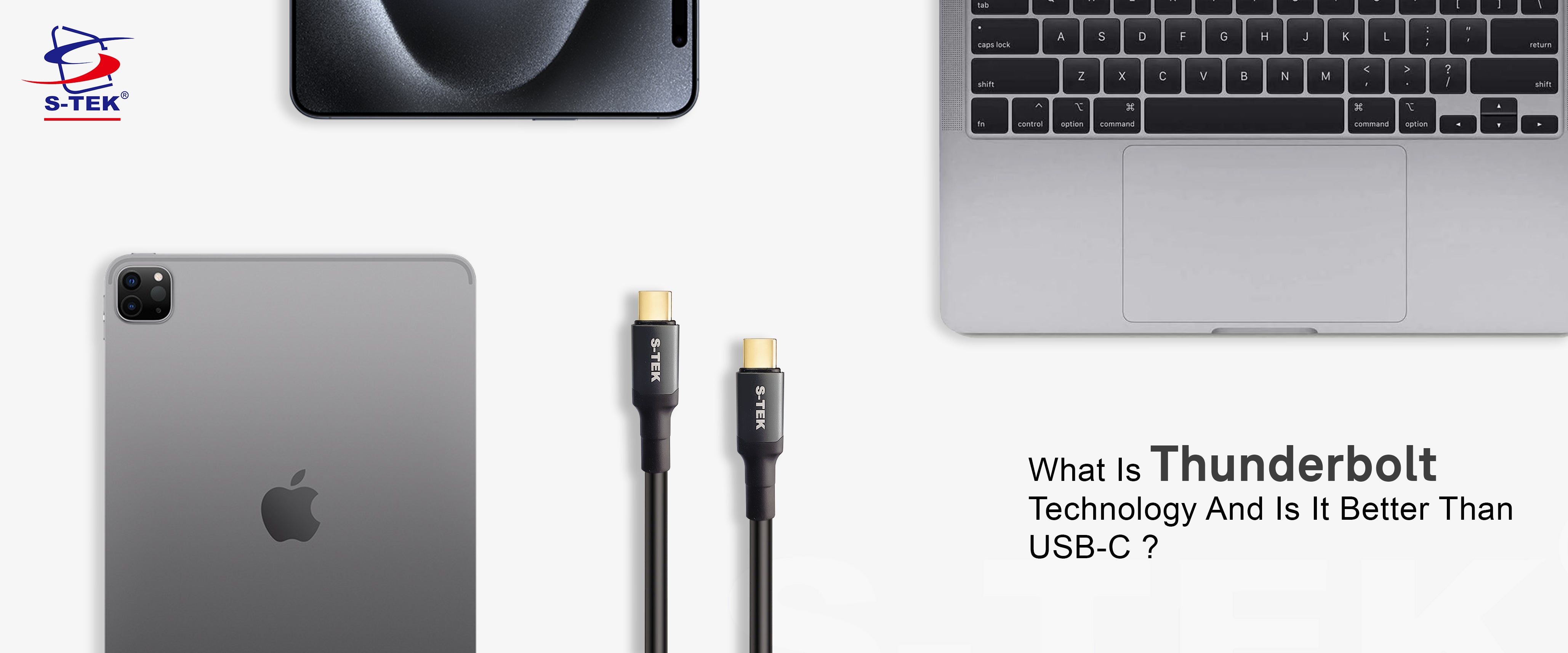
Displayport vs HDMI: The Significance of DisplayPort for Future Video Connections
In the world of connectivity, two titans, Displayport and HDMI, stand tall in competition. While HDMI has been common for household use, Displayport is rising as a powerful contender enhancing the way we connect and transmit multimedia content. Whether it's a gaming console, or desktop computers, the cables function proficiently, in providing seamless connectivity to the user. However, Displayport is often overshadowed by HDMI popularity, leading people to be unaware of its significance for future video connections. The differences between the two can vary, depending on the generations along with supported resolutions and refresh rates. For instance, a gamer with a graphic card can be thrown into a fuss while choosing between the two. In today’s blog we will discuss the benefits, with a hope to put an end to the Displayport vs HDMI war.
HDMI vs Displayport: Choosing the Right Connection for Your Visual Needs
To begin with, let's focus on their connectors. One of the prime differences between the two is the connector’s shape. The HDMI cable is rectangular with a flat beveled edge on one side. It has 19 pins in three rows. With such a shape, it is only possible to plug it in one direction. This might come across as a negative point, when USB-C connections and non reversible connectors are common these days. A standard Displayport cable connector consists of 20 pins and is rectangular massively along with one notched corner guaranteeing perfect orientation. Displayport does have small hooks that allow you to hold connected cables in one place.With that said, HDMI connectors have proven to be ideal for living room devices, such as TV. On the other hand, Displayport is more commonly used on desktops and laptops.
Focusing on the Differences
Generally speaking, both the cables help you achieve the same goal. They provide you with high-quality audio and video connections from a certain source to a display. Their connectors have been improved over the time, by improving bandwidth to support higher resolutions, frame rates, and advanced technologies. As mentioned earlier, while making a choice, your decision can be affected by which generation you are comparing. The most popular ones on the battle ground are DisplayPort 1.4 and HDMI 2.0, but now that is changing, as there have been debuts of the next-generation, let's have a deep understanding of the differences between two cables.
The Specifications
If asked “Which is better: HDMI vs DisplayPort ?” The answer could easily be DisplayPort. However, the answer could differ according to the device. For example, TV's usually come with an HDMI cable output. Nonetheless, you can still connect DisplayPort by using a connector. With a maximum bandwidth of 18 Gbps supported by HDMI 2.0, 4K resolution at up to 60Hz or 1080p at up to 240Hz may be handled. By contrast, DisplayPort 1.4 offers substantially more potential in terms of quality and frame rate due to its maximum bandwidth of 32.4Gbps. Even with less chroma subsampling, HDMI 2.0 is unable to deliver 8K resolution at 30Hz or 4K resolution at up to 120Hz without compression.
A maximum total data rate of 77.37 Gbps and a maximum total bandwidth of 80 Gbps are also possible with DisplayPort 2.1. Included with these are three new transmission modes that not all DisplayPort 2.1 connectors and cables will be able to support. With a total bandwidth of 40 Gbps and 10 Gbps per lane, the base performance is comparable to that of HDMI 2.1. However, other DisplayPort 2.1 connections can support up to 20 Gbps with the most capable ones and up to 13.5 Gbps per lane. Officially, 4K DisplayPort 2.1 at 240Hz without any compression, or 8K at 60Hz with the use of Display Stream Compression and Chroma Subsampling. It could theoretically handle a single 16K display with DSC.
The Features
In the battle of Displayport vs HDMI, the difference is not only restricted to bandwidth and connector, but it also includes their features. One of the prominent differences are ARC and EARC technologies. While HDMI 1.4 allows two-way processing of audio data, allowing a chain of A/V equipment, source and display, along with enhancing the bandwidth of the audio connection. HDMI 2.1 provides support for eARC which uses the extra data rate of the new standard and as well as support for 3D technologies like Dolby Atmos and DTS:X
Displayport on the other hand has been successful as a standard outside of the main connector. It has been added to Thunderbolt and USB-C connections, enhancing video transmission over alternate cables and ports. Displayport 2.1 has enhanced data transmission over USB-C cables. Additionally, it has come up with new naming conventions for the best Displayport cable, which offer 40 Gbps of data rate or 80 Gbps respectively.
Why Should You Opt for a DisplayPort Monitor?
Choosing a monitor with a displayport input can take your viewing experience to another level. Here are some key benefits you should be aware of:
Greater Bandwidth: Compared to HDMI, DisplayPort offers far more bandwidth, enabling up to 16K resolutions and 240Hz refresh rates. This results in images that are crisper and more fluid, particularly for demanding jobs like gaming or video editing.
Support for numerous displays: DisplayPort makes it possible to daisy-chain numerous displays without requiring separate cables for each, which streamlines your setup and cuts down on clutter from cords.
Advanced capabilities: A lot of DisplayPort monitors are equipped with capabilities like audio return channel (ARC) to send audio back to your computer, longer connection lengths without signal loss, and variable refresh rate (VRR) to make gaming more fluid.
Future-proof: DisplayPort, the more recent standard, is anticipated to be around longer than HDMI, so your display will continue to work with future gadgets.
Displayport vs HDMI: We have a Winner
Looking ahead to video connections, it is clear that DisplayPort will play a major role in transforming our visual experiences. Its greater scalability, improved bandwidth, and versatility beyond what HDMI has to offer, paving the way for state-of-the-art developments in display technology. DisplayPort is at the vanguard of allowing smooth, high-fidelity connections between devices, and its robust features ensure that it stays so even as we embrace higher resolutions, faster refresh rates, and upcoming innovations. Moving past HDMI brings us to a place where DisplayPort promises a rich, immersive future for video transmission and display, while also meeting and surpassing our changing needs for better visual connectivity.


